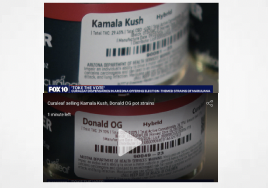GMP Series Part 3: Process Equipment Procurement
Authored by Michael Sassano and Antonio Guedelha
Also see
GMP & Compliance: GMP SERIES #1: “Starting Your GMP Approval Process for Cannabis Correctly”
GMP Series Part 2: Building and Design – Authored By: Michael Sassano and Antonio Guedelha
In the next installment of the Good Manufacturing Practices (GMP) Series, we will be exploring process equipment procurement.
A fundamental step in the journey to becoming GMP certified, process equipment procurement might seem simple on its face.
However, there are several steps you must take in order to be successful.
- Equipment Selection
Choosing your equipment is one of the most important steps when designing your GMP facility. The choice of equipment can determine the amount of required space, room sizes, and what type of airflow your operation will need. The first challenge is to decide on the best machinery that provides the facility with efficient technology, high validation and low operation costs. Depending on the target, there are solutions and products that can meet needs more adequately than others.
Use the utmost care in choosing the right GMP qualified equipment for your operation. Regardless of whether it is nutraceutical or pharmaceutical, trimming your budget or cutting corners on processing equipment can become a costly mistake, potentially disrupting your certification and throwing off your product process. No matter what, construction is a great expense, but the equipment ultimately makes the products. Do not underestimate the complexity of compliance with GMP. The process is highly technical and carries increased costs in comparison to standard equipment you may be used to.
- GMP Environment
After you select your equipment, you will need to verify that the equipment is made to work in a GMP environment. One way to do so is to send the equipment supplier your User Requirement Specification (URS) for that equipment; however this is not easy to prepare. Try utilizing the services of a consulting company. You can do this by inserting the URS inside of the equipment supply agreement, as part of the required terms. Another way to do this is by inserting a line into the equipment supply agreement stating that the supplier warrants that the equipment is ready and able to be used in a GMP environment and does not contaminate the product nor the air of the cleanroom. Then, add a clause that specifies that in case the Authority Inspection refuses the process equipment, there will be a penalty equivalent to the loss of earning during all the months needed to replace the equipment as well as the needed costs of changing of cleanrooms and other parts.
How do you know if your equipment is GMP compliant? The easiest way to determine this is by making sure the equipment has been used and approved in an existing facility. Qualified equipment will solve many of the issues you may face in this process.
- Acquisition Steps
There are several phases of this next step: the acquisition of equipment. The first step is carving out a timeline and choosing when to receive the equipment. During construction of the facility, there will be several construction companies working inside the building. The construction workers will need space to operate and store tools. Since your equipment is so expensive, it will need to be separated from the construction. For this reason, plan out the arrival of equipment accordingly. This delivery method not only protects your equipment from dangers of a construction zone, it also helps to ensure that you avoid additional costs to store your processing equipment off-property. You’ll also want to be sure the equipment arrives before the closing of your clean rooms. This plan can obviously go awry due to the uncertainties involving construction timing and delivery, but it gives you the best shot to save your equipment and your money.
- Supply Planning
Once you have verified and chosen your equipment, it’s time to order it. It is critically important to order the equipment to coincide with the finishing of your construction. Some equipment takes up to 8 months or longer to deliver. By making ample time beforehand, you’ll be able to schedule out deposits and orders. If possible, you want to wait to pay a final deposit until after you have tested all of the equipment and at best, after you receive your certification. Keep in mind, you will need to check and approve the equipment before shipping and after receiving it in the facility. Also, be sure to buy insurance for transportation and load and unload the equipment, accidents happen.
- FAT – Factory Acceptance Test
The process equipment you are buying makes a crucial step in the manufacturing process, so all of it must work as you need it to and comply with standards. When you are buying new equipment, you will either trust the supplier or the equipment. In any case, you need to verify that the equipment you are getting will pass GMP standards, especially if it is your first time. Importantly, no matter why you chose the equipment, test the equipment in the suppliers’ factory to make sure it works. This is called Factory Acceptance Tests (FAT). In these tests, you verify if the machine’s operation is making the manufacturing steps as it was designed to. Most of the time, the result is a list of items that need to be adjusted, corrected, or are missing in the equipment. These tests help you check if all parts of the equipment are installed, working correctly, have safety controls, signals, and accurately calibrated. While running the tests, create a list to remind yourself what needs to be looked at and performed.
This is important for all parties, since it is much easier to correct equipment in the factory than in your facility. Your team can even be present with the testing at the equipment supplier’s factory or by video time dependent. After you sign the report of the test and approve payments, the equipment will be shipped to your facility.
- SAT – Site Acceptance Test
After receiving the equipment at your facility, you will need to once again review the equipment to ensure it is working as it is supposed to. Check that each part came as ordered and everything was delivered. Immediately check if any damage occurred during shipping. This will save many headaches that can arise between the supplier and shipper. Often, equipment tests well at the factory, but is delivered damaged. If this is the case, immediate documentation is necessary. Do this at receiving.
Once accepted, the process equipment will be installed in your facility and connected to electricity and other utilities such as hot and cold water, thermic fluids, purified water, compressed air and gases. Be prepared with a similar checklist as you install and operate the equipment. Remember: It will be there for many years.
- Final performance tests
After you’ve received your equipment, it’s fundamental to continue performing tests on your equipment. Even the most reputable companies have issues. After-purchase service should be a critical part of your decision making. Once you’ve received the equipment, you’ll have to prepare for future repairs and cleaning issues that can harm your business and your production line. Hold onto your deposit until you are completely satisfied and certain the equipment is working 100% correctly. Perform runs and tests to verify that the equipment’s performance is according to what it is specified in the agreement. Test that the output of the machine matches the quantity and meets timing objectives. Specify in the supply agreement that if the process equipment does not deliver more than 90% of the specified values, it will decrease in price and that you have the power to refuse the equipment. For quality, is also important to specify in the agreement the targets. The other important parameter is the quality of the output. Sometimes equipment will deliver the output specified, but with many non-conform products.
- GMP Qualification
For the equipment to be used in a GMP pharmaceutical facility, it is necessary to qualify it inside the facility. The process of qualification has several steps, some of which we already covered URS, FAT and SAT. There are also design qualifications (DQ), which is a document that defines the functional and operational specifications of the equipment. Instillations Qualification (IQ) will show that the processing equipment received matches what was designed and specified, and it will demonstrate that it is installed according to the specification. Operational Qualification (OQ) will show that the equipment is functioning according to the operational specifications in the cleanroom of your facility. Moreover, the output quantity, time and quality will be verified in the tests for OQ. Finally, Performance Qualification (PQ) checks the performance of the equipment’s consistency and specifications of routine use. In this document, you will verify the routine operation of the equipment.
A Process Equipment Supplier that already supplied equipment to the pharmaceutical Industry will provide protocol documentation for all of this. Of course, that will have an additional cost but it is well worth the expense.
Now, you’re ready to let go of that deposit and be happy with your purchase. You can be confident you did the procurement process right and you have brought great controls to the process. And most of all you protected your investment by performing proper FAT and SAT acceptance before giving the entire payment.


















